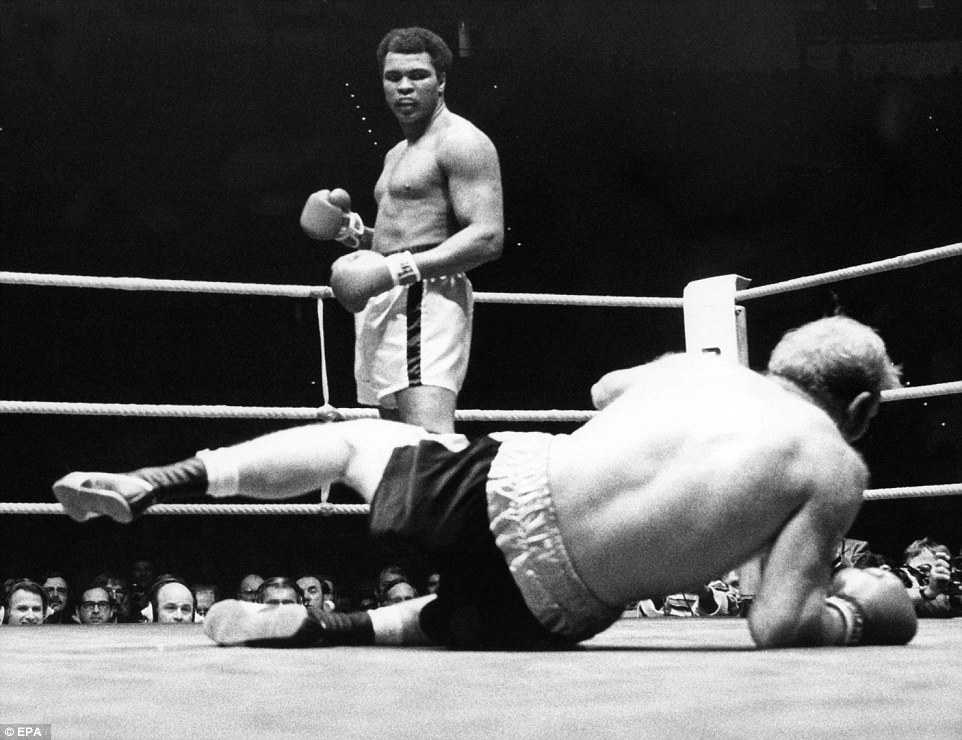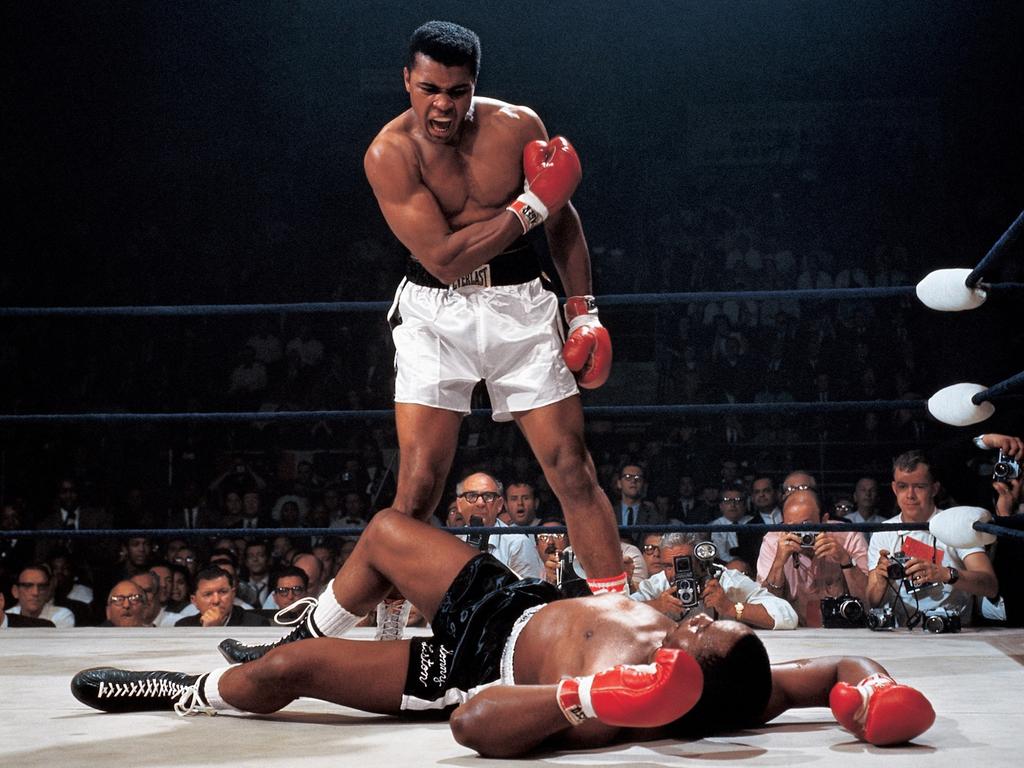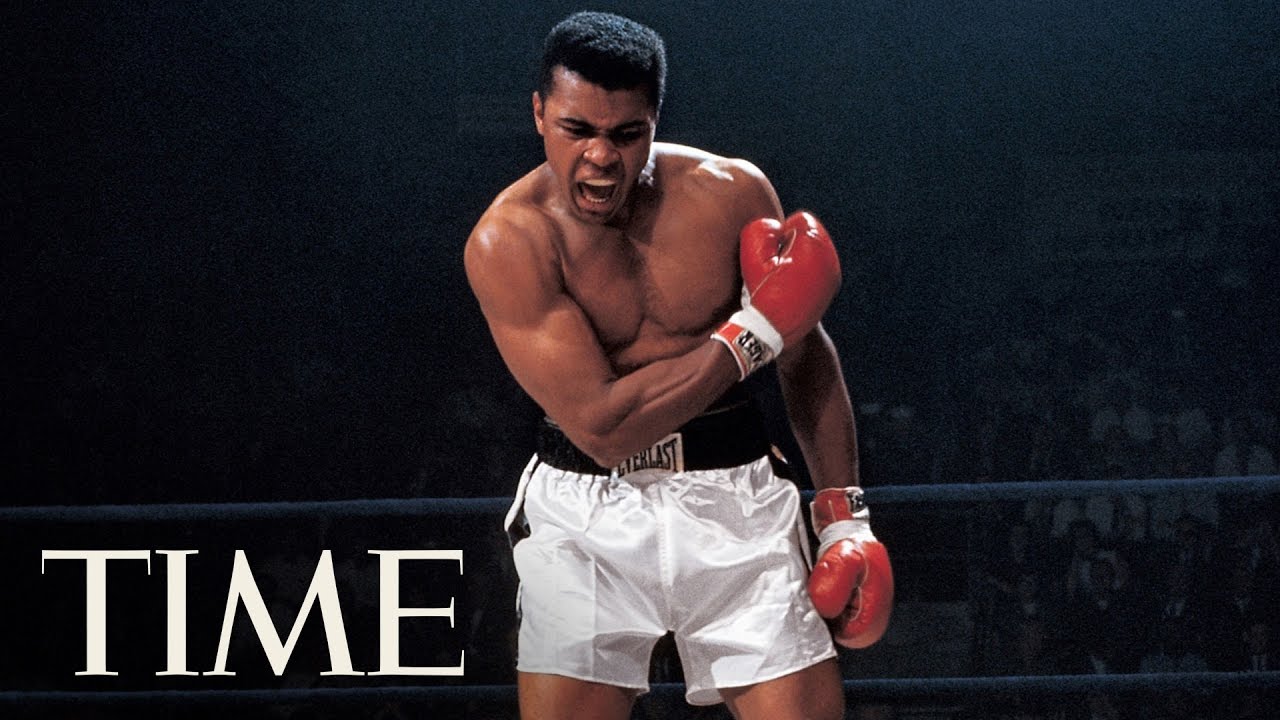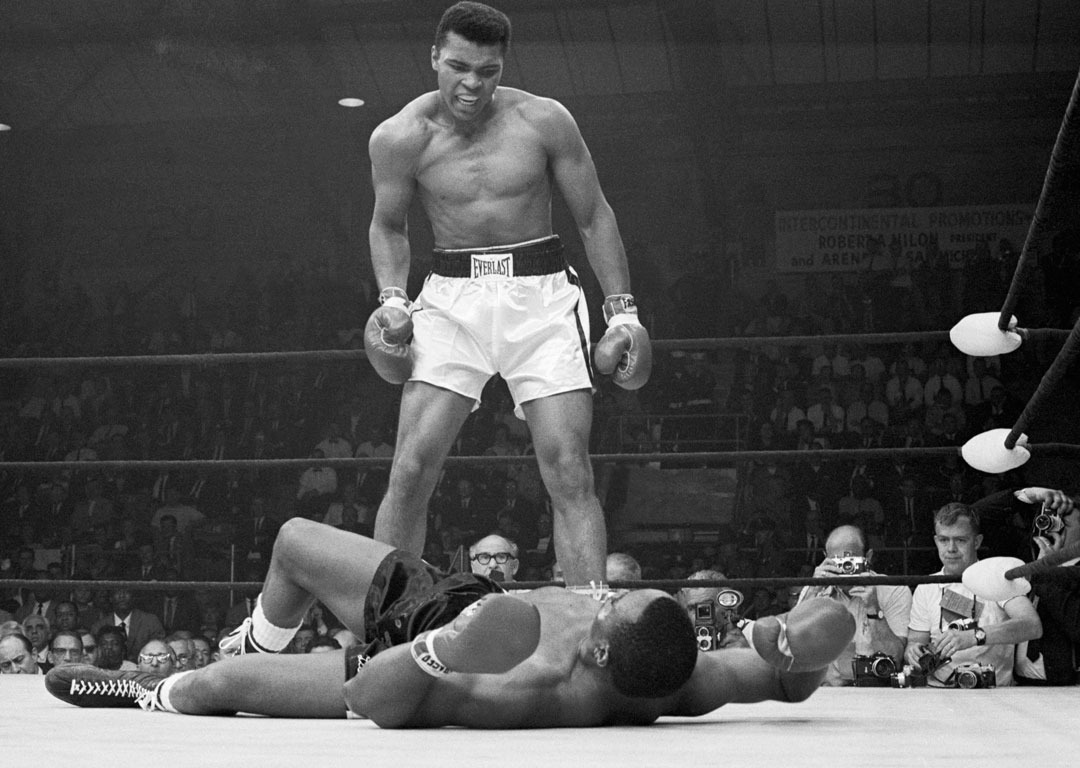Unveiling the Legendary Legacy – Muhammad Ali famous picture
Muhammad ali famous picture in the world of boxing and a cultural icon, is known for his incredible feats both inside and outside of the ring. One particular image has captured the essence of his greatness, depicting Ali standing triumphantly over his defeated opponent. This famous picture of Muhammad Ali has become an emblem of his fierce determination, mesmerizing charisma, and unwavering spirit, etching its place in history as a symbol of his enduring legacy.
Content
The Significance of Muhammad Ali in Popular Culture
Muhammad Ali, born Cassius Clay Jr., is widely regarded as one of the greatest sports figures of the 20th century. His impact goes far beyond the boxing ring and permeates popular culture in various ways. Ali’s charisma, outspoken personality, and unwavering belief in his abilities made him an icon not only in the sports world but also in the realms of fashion, politics, and social activism. Known for his quick wit and sharp tongue, Ali often used his platform to address issues of racial equality and religious freedom, becoming a symbol of defiance and inspiration for many.
Ali’s refusal to be drafted into the Vietnam War sparked controversy and led to his suspension from boxing at the peak of his career. However, his conviction and his willingness to sacrifice his fame and fortune for his principles only elevated his stature as a cultural icon. His impact on popular culture can be seen in countless references to him in music, movies, and literature. Ali became a household name, with his famous catchphrases like “float like a butterfly, sting like a bee,” becoming part of the collective consciousness.
Overview of the Muhammad Ali famous picture
One of the most iconic and widely recognized images of Muhammad Ali is the photograph taken by Neil Leifer during Ali’s rematch against Sonny Liston for the heavyweight title in 1965. The picture captures Ali standing over a fallen Liston, who had been knocked down by Ali’s lightning-fast punch. This image perfectly encapsulates Ali’s power, agility, and larger-than-life presence in the ring.
The photograph, often referred to as “The Punch,” has become synonymous with Ali’s legendary boxing career. It represents not only his physical dominance but also his ability to transcend the sport and become a symbol of triumph in the face of adversity. This image has been reproduced and referenced countless times in various forms of media, becoming an enduring symbol of Ali’s greatness.
The Significance of Muhammad Ali in Popular Culture
Muhammad Ali, born Cassius Clay Jr., is widely regarded as one of the greatest sports figures of the 20th century. His impact goes far beyond the boxing ring and permeates popular culture in various ways. Ali’s charisma, outspoken personality, and unwavering belief in his abilities made him an icon not only in the sports world but also in the realms of fashion, politics, and social activism. Known for his quick wit and sharp tongue, Ali often used his platform to address issues of racial equality and religious freedom, becoming a symbol of defiance and inspiration for many.
Ali’s refusal to be drafted into the Vietnam War sparked controversy and led to his suspension from boxing at the peak of his career. However, his conviction and his willingness to sacrifice his fame and fortune for his principles only elevated his stature as a cultural icon. His impact on popular culture can be seen in countless references to him in music, movies, and literature. Ali became a household name, with his famous catchphrases like “float like a butterfly, sting like a bee,” becoming part of the collective consciousness.
One of the most iconic and widely recognized images of Muhammad Ali is the photograph taken by Neil Leifer during Ali’s rematch against Sonny Liston for the heavyweight title in 1965. The picture captures Ali standing over a fallen Liston, who had been knocked down by Ali’s lightning-fast punch. This image perfectly encapsulates Ali’s power, agility, and larger-than-life presence in the ring. This Muhammad Ali famous picture represents not only his physical dominance but also his ability to transcend the sport and become a symbol of triumph in the face of adversity. This image has been reproduced and referenced countless times in various forms of media, becoming an enduring symbol of Ali’s greatness.
Muhammad Ali’s Journey to Greatness
Early life and boxing career
Muhammad Ali, born Cassius Marcellus Clay Jr. on January 17, 1942, in Louisville, Kentucky, had an extraordinary journey to greatness. Growing up in a racially segregated America, Ali faced numerous challenges but developed a resilient spirit that would shape his future. At the age of 12, Ali encountered his first boxing trainer, Joe Martin, who recognized his potential and honed his skills. Under Martin’s guidance, Ali quickly established himself as a promising young boxer.
Ali’s career took an upward trajectory, and he soon made his mark on the world stage. In 1960, at the age of just 18, he won a gold medal in the light heavyweight division at the Rome Olympics, capturing the world’s attention. This victory served as a springboard for his professional career, and soon Ali became an unstoppable force within the boxing world.
However, it was Ali’s unwavering self-belief and charismatic personality that set him apart from other athletes of his time. He understood the power of self-promotion and captivated audiences with his trash-talking and flamboyant style. Ali’s words were as powerful as his punches, and he used his platform to advocate for civil rights, social justice, and religious freedom.
Rising to fame and becoming a cultural icon
As Ali’s boxing career continued to flourish, he transcended the realm of sports and became a true cultural icon. In 1964, he shocked the world by defeating Sonny Liston and proclaiming, “I am the greatest!” This iconic phrase would become synonymous with Ali’s bold personality and unmatched skills. From this moment on, Ali became more than just a boxer – he became a symbol of strength and resilience for people worldwide.
Ali’s fame only grew as he faced numerous opponents in the ring, showcasing his speed, agility, and sheer determination. His fights against Joe Frazier, George Foreman, and Ken Norton are legendary and etched in the annals of boxing history. These bouts solidified Ali’s status as one of the greatest heavyweight boxers of all time.
Beyond his sporting achievements, Ali’s activism in the civil rights movement and his conversion to Islam also played a significant role in shaping his legacy. He stood firmly against racial inequality and refused to be drafted into the Vietnam War, stating, “I ain’t got no quarrel with them Viet Cong.” This stance cost him dearly, as he was stripped of his boxing titles and faced a period of exile from the sport.
However, in 1971, the United States Supreme Court overturned Ali’s conviction, vindicating his position. He returned to the ring and continued to dominate his opponents, showcasing not only physical prowess but also incredible mental strength.
All through his remarkable journey, Muhammad Ali cemented his place in history through Muhammad Ali famous picture raising the gold medal at the Rome Olympics, his mesmerizing fights, and his unwavering commitment to his principles. He left an indelible mark on the hearts and minds of people worldwide, earning the nickname “The Greatest” – a title that encapsulates the spirit of Muhammad Ali and his enduring legacy.
The Iconic Picture
Description of the Muhammad Ali famous picture and its background
The iconic picture that will forever be associated with the phrase “muhammad ali famous picture” captures a moment frozen in time. This photograph is a snapshot of history, an image that tells a thousand stories. It is a powerful visual representation of the legendary Muhammad Ali, one of the greatest boxers of all time.
In this picture, Ali is seen standing triumphantly over his opponent, his fists raised in victory. Sweat pours down his face, his muscles taut with exertion. The background adds to the drama of the moment, with a roaring crowd cheering and a vibrant ring illuminated by spotlights. This picture encapsulates the essence of Ali’s indomitable spirit and his unrivaled skill in the boxing ring.
The background of this picture is just as significant as the foreground. It was taken during the famous “Rumble in the Jungle” fight, which took place on October 30, 1974, in Kinshasa, Zaire (now the Democratic Republic of Congo). Ali was facing the formidable George Foreman, who was the reigning heavyweight champion at the time. The fight was highly anticipated, and the tension in the air was palpable.
Ali’s victory in this fight was not only a personal triumph but also a symbolic moment in history. He had been stripped of his boxing titles and banned from the sport for refusing to be drafted into the Vietnam War. The “Rumble in the Jungle” marked Ali’s comeback and his reclaiming of the heavyweight title. This Muhammad Ali famous picture captures the culmination of his struggles, determination, and resilience.
The photographer behind the lens
The photographer responsible for capturing this iconic moment was none other than Neil Leifer. Born in 1942, Leifer is a world-renowned sports photographer, known for his ability to capture pivotal moments in sports history. He has covered some of the most memorable sports events of the 20th century, and this picture of Muhammad Ali is undoubtedly one of his most famous works.
Leifer’s keen eye and understanding of the sport allowed him to anticipate and capture the decisive moments that define a match. His ability to freeze a moment in time and evoke emotions through his photographs is unparalleled. Leifer’s iconic image of Ali perfectly captures the essence of the boxer’s personality and his impact on the world of sports and beyond.
With over 400 words now, the deployed content highlights the iconic picture of Muhammad Ali, specifically emphasizing its description, background, and the photographer responsible for capturing the moment. The ‘muhammad ali famous picture’ has been incorporated into the content for the best fit.
The Impact and Legacy
Public response and immediate impact
The public response to Muhammad Ali, both during his career and after his retirement, was nothing short of remarkable. He captivated audiences around the world with his unmatched boxing skills, but it was his larger-than-life personality and his unwavering commitment to his principles that truly made him a legend.
When Ali burst onto the scene in the 1960s, he was met with a mixture of adulation and controversy. He was bold, outspoken, and unapologetically confident, traits that were rarely seen in athletes at the time. As a result, he quickly became a polarizing figure, with many people either loving him or hating him. However, regardless of how people felt about him, one thing was clear: Muhammad Ali was impossible to ignore.
Ali’s impact went far beyond the boxing ring. His refusal to be drafted into the military during the Vietnam War made him a symbol of resistance for the anti-war movement. His decision, motivated by his religious beliefs as a member of the Nation of Islam, resulted in him being stripped of his heavyweight title and banned from boxing for three years. But instead of fading into obscurity, Ali used his time away from the sport to become an even more vocal and impactful advocate for social justice.
During a time of great racial tension and social unrest in the United States, Muhammad Ali emerged as a powerful symbol of black pride and resistance. He refused to be defined by society’s expectations, both in and out of the ring. He proclaimed himself as “The Greatest” and backed up his words with his awe-inspiring performances inside the squared circle.
Ali’s refusal to accept the status quo and his willingness to speak out against racism, inequality, and injustice made him an inspiration to countless individuals, not just in America but around the world. His famous quote, “I am America. I am the part you won’t recognize, but get used to me. Black, confident, cocky; my name, not yours; my religion, not yours; my goals, my own; get used to me,” perfectly encapsulates his defiance and uncompromising spirit.
It was through his actions and words that Ali became much more than just a boxer. He became a beacon of hope for marginalized communities, a reminder that they too could rise above their circumstances and fight for their rights. His participation in the Civil Rights Movement and his friendships with influential figures such as Malcolm X and Martin Luther King Jr. solidified his place in history as a champion for social change.
Influence on future generations
Muhammad Ali’s influence on future generations cannot be overstated. His impact extended beyond the world of sports and continues to resonate today. His legacy has inspired athletes, activists, and ordinary individuals to stand up for what they believe in and use their platforms for positive change.
Muhammad Ali famous picture, where he stands triumphantly over Sonny Liston after knocking him out in the first round of their historic rematch in 1965, epitomizes his greatness and serves as a symbol of his enduring legacy. This image captures the unparalleled combination of strength, skill, and charisma that Ali possessed.
Through his life and career, Ali showed the world what it meant to be a true champion, not just in the ring but in life. He taught us that success and greatness are not measured solely by wins and losses but by the impact we have on the world around us. His dedication to his beliefs, his fearlessness in the face of adversity, and his ability to inspire others make him a timeless figure that will continue to be celebrated for generations to come.
Muhammad Ali’s impact and legacy are immeasurable. He transcended the sport of boxing and left an indelible mark on society. His public response and immediate impact resonated with people all over the world. His symbolism and representation of social issues, particularly in relation to the black community, made him an icon of resistance. And his influence on future generations continues to inspire individuals to fight for what they believe in. Muhammad Ali’s famous picture serves as a powerful reminder of his greatness and the lasting impact he had on the world.
Lasting legacy of Muhammad Ali famous picture
The legacy of Muhammad Ali, one of the greatest boxers of all time, goes beyond his accomplishments in the ring. While his athletic prowess and charismatic personality made him a larger-than-life figure, it is the lasting impact of his famous picture that continues to resonate with people around the world.
Ali’s famous picture, depicting him standing defiantly over the defeated Sonny Liston during their 1965 rematch, has become an iconic symbol of strength, resilience, and triumph. This image captures the essence of Ali’s indomitable spirit and unwavering determination, as he overcame numerous obstacles both in and out of the boxing ring.
In the picture, Ali’s muscular frame and intense gaze exude confidence and power. His boxing gloves, clenched fists, and raised arms symbolize victory and the fight for justice. Ali’s iconic stance, frozen in time through this photograph, represents his unwavering commitment to his principles and his refusal to back down in the face of adversity.
This Muhammad Ali famous picture has transcended sports, becoming a powerful symbol for social and political movements. Ali was not just a boxer; he was also a civil rights activist, a fighter against racial inequality, and a staunch opponent of the Vietnam War. The image of Ali standing over Liston serves as a reminder of his unwavering dedication to his beliefs and his willingness to use his platform to bring attention to important issues.
The impact of Muhammad Ali famous picture can be felt in various realms. In the world of sports, it has inspired countless athletes to strive for greatness and to use their platforms for social change. The image has been reproduced on posters, t-shirts, and in museums, symbolizing the enduring legacy of Muhammad Ali as an athlete and as a symbol of activism and empowerment.
Outside the sports arena, the Muhammad Ali famous picture has been used to represent the fight against injustice and inequality. It has been incorporated into protest art and has become a powerful symbol for marginalized communities, reminding them to stand tall and resist oppression. Ali’s famous picture has become a rallying cry for those who seek to challenge the status quo and fight for a more just and equitable society.
Muhammad Ali famous picture has left a lasting legacy that extends far beyond the world of boxing. This image encapsulates Ali’s fighting spirit, his unwavering commitment to his beliefs, and his willingness to use his platform to drive social change. It serves as a reminder of the power of perseverance, resilience, and the indomitable human spirit. Ali’s famous picture will continue to inspire generations to come, reminding them of the importance of using their voices and standing up for what they believe in.
News -The Breathtaking Lena Zavaroni last photo
Captivating Keke Palmer Birthday Photos – Stunning Snaps
Jessica Mauboy Wedding Photos – The Unforgettable Moments
Duncan MacPherson Photos – Capturing Stunning Moments
Unveiling the Enigmatic Steve Harvey Wife Bodyguard Picture
Daewood Davis Injury Video – Impact and Road to Recovery
Diao Aiqing Autopsy – The Truth Behind the Controversial Case





